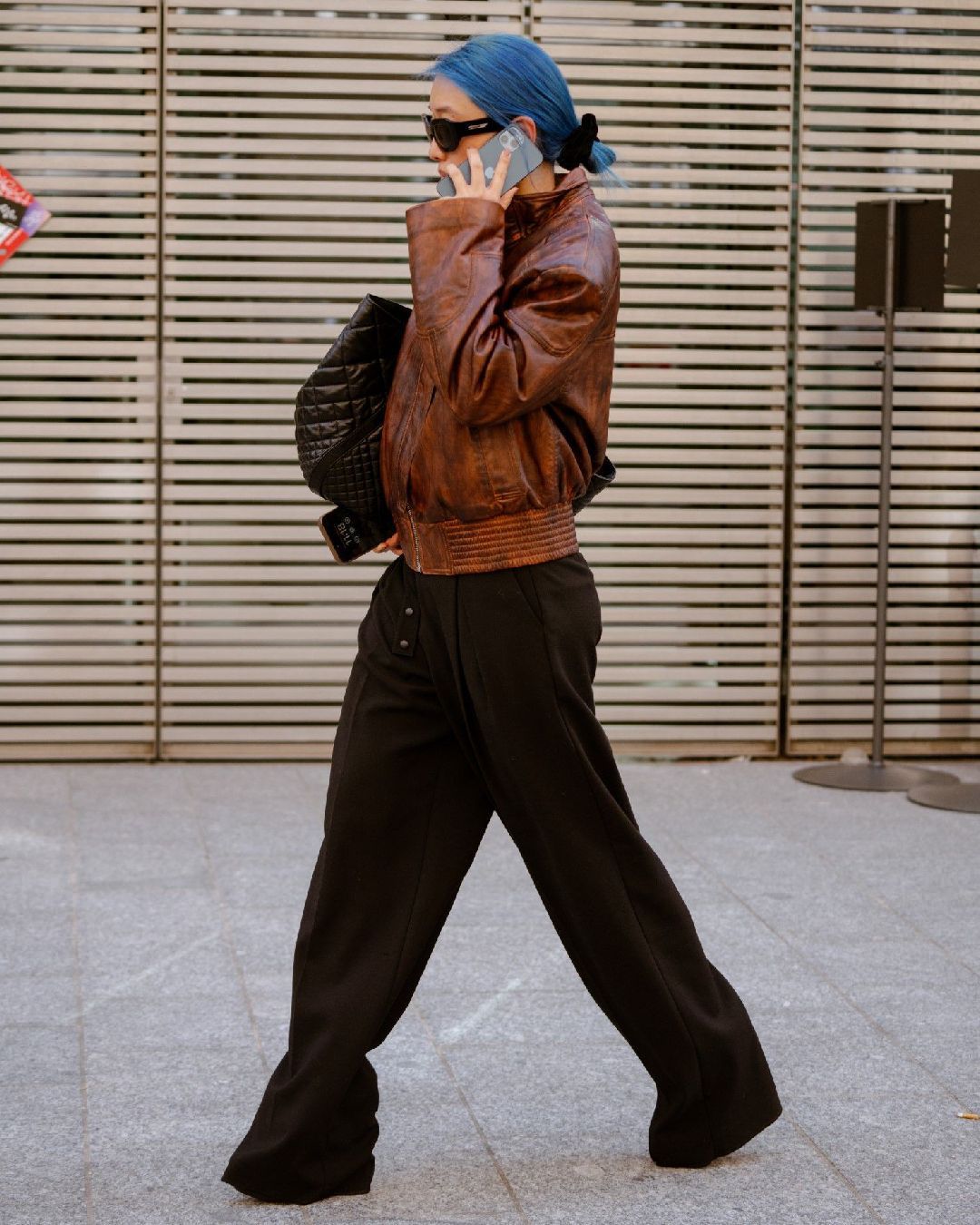
The future of communication in luxury is off the phone The return of intimacy, of the show as performance and of a fashion that breathes
During Paris Fashion Week FW24 Women’s, the Olsen twins were sharply criticized for breaking an unwritten law of the Fashion Industry. For this season, the tailored and very expensive epitome of quiet luxury from The Row brand were hidden from the public eye on social media when the founders decided that the view of the garments would be exclusively reserved for the "physical" attendees of the show. Only a few dozen chosen influencers, press, and close friends of the brand witnessed the event, where the ban was made clear from the beginning: "We kindly ask you to refrain from taking or sharing any content during your experience." Instead of phones, guests were given Japanese notebooks and a pen to take notes, and the choice was, as expected, rather divisive. Yet the closed-door (or camera) runway show by the Olsens, besides triggering a surge in searches among enthusiasts who had to wait for Vogue Runway to see the garments, also raised new points for reflection on the nature of the relationship between social media and luxury and on the future of enjoying the shows themselves. In an era where the word community seems increasingly impactful in the financial strategies of brands and where a brand's profitability is no longer inherently linked to its social following (recall Bottega Veneta's Instagram profile closure during the Daniel Lee era), how is success measured? How do you retain the 1% of high-spending clientele in a sea of competition, and how do you instead keep the remaining 99%, who certainly do not have the finances to buy The Row, but whose mere admiration can exponentially fuel its aspirational allure?
Although The Row case is certainly the most extreme, the growing influence of technology, understood as a double-edged sword between connectivity and isolation in contemporary society, has been a topic of reflection for all brands. Miu Miu showcased its top client Qin Huilan on the runway, a seventy-year-old silver-haired doctor from Shanghai and a loyal customer of the maison, precisely to celebrate a need for intimacy that goes beyond the pixels of the screen and truly engages the end consumer. It is precisely the search for intimacy that unites these initiatives - an intimacy that in recent years has been entrusted to after parties, understood as a cathartic gathering space where the boundary between press, designers, models, and influencers disappears on the dance floor. This is demonstrated by the party following Sabato De Sarno's debut runway show for Gucci, where the VIP area was abolished in favor of a large barrier-free room, and confirmed by the event following the second runway show by Stefano Gallici at the creative helm of Ann Demeulemeester, where electronic music flowed coherently around the indie sleaze outfits of the attendees. Over the years, the afterparty has taken on an almost sacred value, confirmed by the widespread belief among industry insiders that it is the vibe experienced during the party that determines the success or failure of a designer's work for an entire season. Evidence that yes, it's yet another event where no guest can leave without first posting an Instagram story in full brand look, but it's also a moment where fashion breathes, moves. Those who experience it touch it, dance and sweat in a very human imperfection that, however, we are no longer accustomed to seeing or that the screen is not used to showing under the glossy fashion spotlights.
To understand the direction that social media are taking in the narrative of luxury fashion in late capitalist society, one must take a step back: look at the consumer from afar, trying to grasp a picture of their evolving purchasing habits. In the realm of social media, as perhaps was easy to expect, the new report by Karla Otto and CTZAR titled Marketing in a World of Paradox attests that the rise of TikTok has revolutionized the influencer culture: according to a survey cited in the study, 76% of users claim to be bored of global celebrities (and who can blame them) while 68% say they are annoyed by the flood of sponsored content that in media and advertising overexposure is losing credibility. Despite the mistrust, of the over 950,000 internet users surveyed, it emerged that a third of people aged 18 to 30 reported symptoms of 'smartphone addiction' with increasingly feelings of isolation and detachment from reality. Social gimmicks still work, especially if they are strange enough to interrupt compulsive scrolling - AVAVAV's disintegrating clothes, for example, Alex Consani's bizarre backstage, Coperni's air bags in collaboration with NASA - but especially during fashion shows, users' attention is always captivated by the glow of celebrities in the front row rather than the garments themselves. For luxury, the need for the runway as a performance returns, a moment of sacred gathering, an elitist event because, after all, it's only the elite who can afford a Margaux from The Row for $7000, and it's certainly not the elite who will watch the Olsens bow at the end of the show from behind a screen.











































